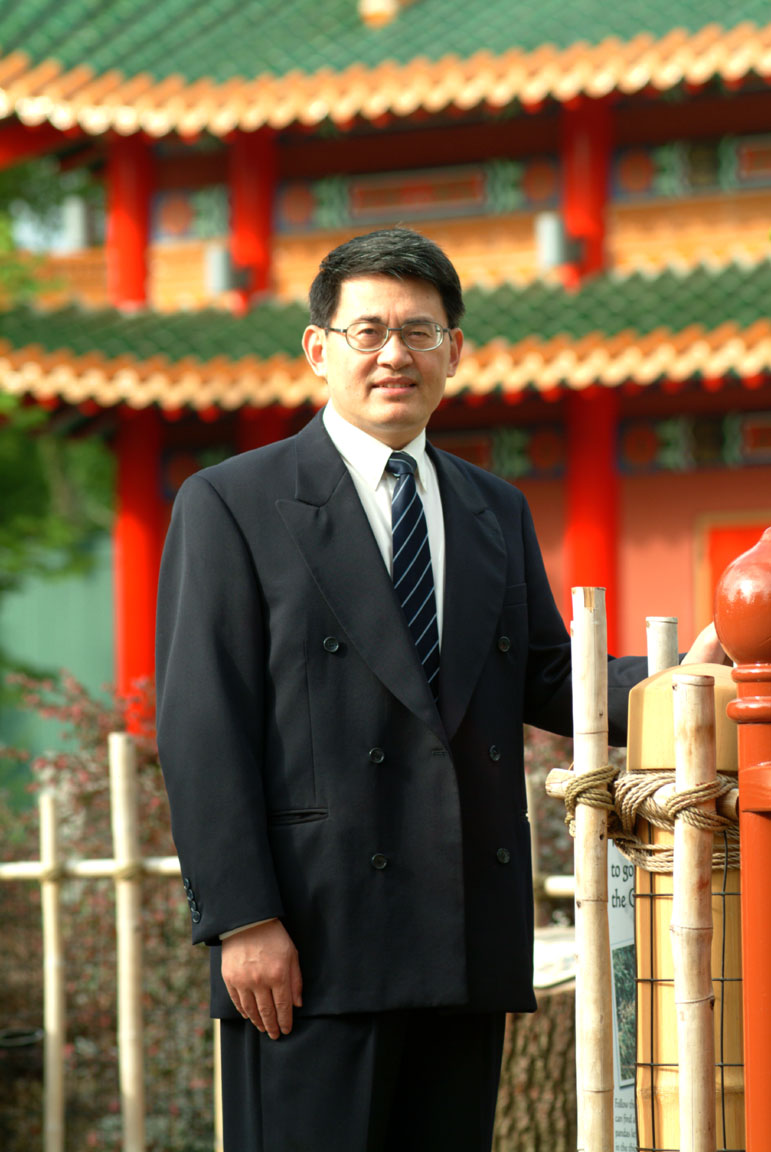顧明棟,字澤木,中國江蘇人,芝加哥大學文學博士,美國達拉斯得州大學中國文學和比較文學教授 ,英國《泰晤士報》世界大學排名學術聲譽評議人之一,美國《諾頓理論與批評選》特別顧問,負責推選中國第一位文藝理論家進入世界權威的文論選。
基本介紹
- 中文名:顧明棟
- 外文名:Mingdong Gu
- 國籍:中國
- 民族:漢族
- 出生地:江蘇
- 職業:教授
- 畢業院校:芝加哥大學
- 主要成就:美國《諾頓理論與批評選》特別顧問
- 代表作品:Sinologism: An Alternative to Orientalism and Postcolonialism;
研究方向,個人成就,
研究方向
為英美文學、西方文論、比較詩學、中國思想及中西文化比較研究。
個人成就
著有英文專著3部:(1) Sinologism: An Alternative to Orientalism and Postcolonialism(Routledge Press 2013,米勒教授作序,商務印書館2015年中文版),(2) Chinese Theories of Reading and Writing (SUNY Press 2005),(3) Chinese Theories of Fiction (SUNY Press 2006),英文編著一部:Translating China for Western Readers:Reflective, Critical, Practical Essays (SUNY Press 2014)。中文專著一部《原創的焦慮:語言、文學、文化研究的多元途徑》(南京大學出版社2009年版,李澤厚先生作序),中文編譯著多部。目前正在組織歐美中國文學學者編寫Routledge Handbook of Modern Chinese Literature (盧德里奇中國現當代文學指南)。
發表中英文論文逾百篇,大部分發表於國核心心期刊和國外主流學刊,國內期刊有《文學評論》(三篇),《文史哲》、《文藝研究》(兩篇),《文藝理論研究》(兩篇),《北京大學學報》》(五篇)、《南京大學學報》(五篇),《中山大學學報》(五篇)、《清華大學學報》(兩篇)、《北京師範大學學報》、《廈門大學學報》(四篇)、《浙江大學學報》、《復旦學報》、《武漢大學學報》、《學術月刊》(兩篇)、《江蘇社會科學》、《社會科學戰線》、《藝術百家》(兩篇)、《探索與爭鳴》(兩篇)、《當代外國文學》,《外國文學》(兩篇),《跨文化對話》、《中國比較文學》、《外語教學與研究》, 《外國語》(兩篇)、《南國學術》(澳門,兩篇)和《讀書》等。其中《人大複印資料》全文複印10篇,《新華文摘》、《中國社會科學文摘》、《高校文摘》轉摘達10餘篇次。國外學刊包括:《東西方哲學》(Philosophy East & West)(六篇),《亞洲哲學》(Asian Philosophy),《中國哲學》(Journal of Chinese Philosophy)(四篇),《道—比較哲學學刊》(Dao: A Journal of Comparative Philosophy)(將出)、《美學與藝術評論》(Journal of Aesthetics and Art Criticism),《美學教育》(Journal of Aesthetic Education)(兩篇),《新文學史》(New Literary History),《今日詩學》(Poetics Today),《敘事學》(Narrative),《敘事理論》(Journal of Narrative Theory)、《精神分析季刊》(Psychoanalytic Quarterly),《辨析批評》(Diacritics),《比較文學》(Comparative Literature),《比較文學研究》(Comparative Literature Studies),《加拿大比較文學研究》(Canadian Review of Comparative Literature)(兩篇),《比較文學年刊》(Yearbook of Comparative Literature)、《比較文學與文化》(Comparative Literature and Culture)、《文學與心理學》(Literature and Psychology),《亞洲研究》(Journal of Asian Studies),《東方研究》(Journal of Oriental Studies),《華裔學志》(Monumenta Serica),《中國文學》(Chinese Literature),《現代語言季刊》(Modern Language Quarterly),《勞倫斯研究》(D. H. Lawrence Review)(兩篇)、《翻譯研究》(Translation Review)等。其中近30篇收入《藝術與人文科學索引》(Arts and Humanities Citation Index)或《社會科學索引》(Social Sciences Citation Index)。
中文主要論文:
(1)“漢字的性質新論”,武漢大學學報(2016),no. 4, pp. 33-41.
(2)“‘離形去知,同於大通’的宇宙無意識--禪宗及禪悟的本質新解”,文史哲(2016), no. 3, pp. 54-68.
(3)“‘漢學主義’引發的理論之爭”,南京大學學報(2016), no. 1, pp.137-148.
(4)“論跨文化思想交流的終極平等——從海德格爾等西方思想家與東方思想的相遇談起”,中山大學學報(2015), no. 5, pp. 1-13.
(5)“‘漢學主義’理論和實踐再辨析”,廈門大學學報(2015), no. 4,pp. 1-13.
(6)“中西表演藝術差異之哲學與美學根源”,文學評論(2015), no. 3, pp. 48-55.
(7)“走出語音中心主義---對漢民族文字性質的哲學思考”,復旦學報(2015) , no. 3, pp. 73-82.
(8)“審美愉悅的初始之源——對文學的娛樂功能的深層次考察”,南國學術(2015), no.2, pp. 24-34.
(9)“跨越東西方思想交流的鴻溝”,北京大學學報(2015), no. 2, pp 142-152.
(10)“後殖民理論的缺憾與漢學主義的替代理論”,浙江大學學報(2015), no. 1, pp.179-188.
(11)“後現代語境下的文學價值理論” ,中山大學學報, (2014),no. 2: 29-38.
(12)“文氣論的現代詮釋與美學重構”,清華大學學報, no. 1 (2014): 74-85.
(13)“語言研究的漢學主義——西方關於漢語漢字性質的爭議”,南國學術(2014), no. 1, pp. 125-34.
(14)“西方的語言哲學理論是普適性的嗎?”(2013), no. 6, pp.144-154.
(15)“文化無意識:跨文化的深層意識形態機制” ,廈門大學學報(2013), no. 4, pp. 1-10.
(16)“漢學研究的知性無意識”,北京師範大學學報,(2013),no. 3, pp.15-28.
(17)“中西研究的政治無意識---以夏商周斷代工程為中心”,南京大學學報(2013), no. 3, pp.61-76.
(18)“漢學主義是異化的知識”,探索與爭鳴, (2013), no. 2, pp. 45-49.
(19)“漢學主義----一種跨文化研究的新選擇”,學術月刊(2013), no. 4, pp.15-22.
(20)“中國美學思想中的摹仿論”,文學評論(2012), no. 6, pp. 203—210.
(21)“視覺詩學—中國古詩對英美現代派詩歌的美學啟示” ,外國文學(2012), no. 6, pp. 42-54.
(22)“詩性無意識:跨文化詩學的理論基石” ,北京大學學報(2012), no. 4, pp.44—58.
(23)“神性與藝術創造:論神與藝術家的關係”,社會科學戰線(2012), no. 2: 149-58.
(24)“文氣論:藝術創造的總體性美學理論”,藝術百家(2012), no. 6, pp. 64-73.
(25)“漢學主義的歷史批判” ,中山大學學報(2012),no. 2: 1-17.
(26)“審美暗示—中國古代的開放性文論”,北京大學學報((2011), no. 4, pp. 96-106.
(27)“什麼是漢學主義? --探索中國知識生產的新範式”,南京大學學報( (2011), no. 3, pp. 112-123.
(28)“古代的開放詩學—司空圖’含蓄’篇的後結搆主義解讀” ,中國比較文學(2011), no. 3, pp. 100-08.
(29)“漢學主義—中國知識生產中的方法論之批判” ,清華大學學報(2011) no. 2:128--140.
(30)“漢學、漢學主義與東方主義”),學術月刊(2010) no. 12: 5-13..
(31)“諾頓理論與批評選以及中國文論的世界意義” ,文藝理論研究(2010) no. 6:18-23.
(32)“漢學主義:中國知識生產中的認識論意識形態”,文學評論(2010), no. 4, pp. 87-93.
(33)“漢學與漢學主義:中國研究之批判” ,南京大學學報(2010),no. 1: 79-96.
(34)“周易明象與語言哲學及詮釋學” ,中山大學學報(2009) no. 4: 1-14.
(35)“文學的開放性:中西文論雙向對話的一個共同基礎”,文藝理論研究(2008) no. 6: 1-15.
(36)“中西文化差異與文藝模仿論的普遍意義”,中山大學學報(2008),no. 6: 1-18.
(37)“對中西研究中一些文化理論問題的思考””,江蘇社會科學(2007),no. 3: 187-193.
(38)“後理論時代對理論的抵抗與範式形成”,當代外國文學(2007),no. 2:157-164.
(39)“中西之’一’:作為中西比較研究之理論基礎的道與邏格斯”,文藝研究(2001),no.3: 65-75.
英文主要論文(**為A&HCI或SSCI文章):
(1)“Modernizing Confucianism: Li Zehou’s Vision and Inspiration for an Unfinished Project,” forthcoming inLi Zehou and Confucianism, University of Hawaii Press.
(2)**“Confucian Ethics and Spirit of World Order: A Reconception of the Chinese Way of Tolerance,”Philosophy East and West, vol. 66, no.3 (2016): 787–804.
(3)**“Patterns of Tao: The Birth of Chinese Writing and Aesthetics,”Journal of Aesthetics and Art Criticismvol. 74.2 (Spring 2016), pp. 151-163.
(4)"Lu Xun's Ah Quism: A Study of Its Intrinsic Nature and Transcultural Value,"International Communication of Chinese Culture3.2(2015),207-228.
(5)**“The Ethical Turn in Aesthetic Education: Early Chinese Thinkers on Music and Arts,”Journal of Aesthetic Education,50.1 (Spring 2016), pp. 95-111.
(6)“Momentary Return of the Cosmic Unconscious: The Nature of Zen Enlightenment,”Asian Philosophy, 25.4 (2015), pp. 402–417.
(7)**“How Can We Cross the Intellectual Divide between East and West: Reflections on Reading ‘The Contributions of Process Philosophers,’”Philosophy East and West, 65.1 (January 2015), pp. 298-315.
(8)*“Postmodern Narrative without Postmodern Conditions: Home-Made Modernism in Lu Xun’sOld Tales Retold,”inJournal of Narrative Theory, 44.2 (2014), pp. 81-115.
(9)**“Sinologism in Language Philosophy: A Critique of the Controversy over the Nature of Chinese Writing,”Philosophy East and West, 64.3 (2014): 368-424.
(10)“Readerly Translation and Writerly Translation: For a Theory of Translation That Returns to Its Roots,”inTranslating China for Western Readers: Reflective, Critical, Practical Essays(Albany, NY: State University of New York Press, 2014),pp. 89-116.
(11)“Toward a Transcultural Poetics of Fiction: The Fusion of Narrative Horizons in Chinese and Western Fiction Studies,” inFiction in Global Contexts: History and Recent Developments(Berlin:De Gruyter, 2014), pp. 203-226.
(12)*“Everyone’s Confucius, All Readers’Analects,”Journal of Chinese Philosophy, 37.1 (2010): 34-47.
(13)*The Theory of the Dao and Taiji: A Chinese Model of the Mind,”Journal of Chinese Philosophy, 36.1 (2009): 155-173.
(14)** “FromYuanqi(Primal Energy) toWenqi(Literary Pneuma): A Philosophical Study of A Chinese Aesthetic,”Philosophy East & West, 59.1 (Jan. 2009): 23-46.
(15)*“Is Ezra Pound a Translator of Chinese Poetry?”Translation Review,No. 75 (2008), pp. 47-55.
(16)** “The Divine and Artistic Ideal: Ideas and Insights for Cross-Cultural Aesthetic Education,”Journal of Aesthetic Education, 42.3 (2008): 88-105.
(17)* “Lu Xun and Modernism/Postmodernism,”Modern Language Quarterly, 69.1 (2008): 29-44.
(18)* “Theory of Fiction: A Non-Western Narrative Tradition,”Narrative14.3 (2006): 313-340.
(19)** “The Filial Piety Complex: Variations of the Oedipus Theme in Chinese Literature and Culture,”Psychoanalytic Quarterly,vol. 75, no. 1 (2006): 163-195.
(20)* “Mimetic Theory in Chinese Literary Thought,”New Literary History36.3 (2005): 403-424.
(21)* “Is Mimetic Theory in Literature and Art Universal?”Poetics Today26.3 (2005): 459-499.
(22)** “TheBook of Changesas an Open Classic: A Semiotic Analysis of Its System of Representation,”Philosophy East & West, 55.2 (2005): 257-282.
(23)* “Elucidation of Images in theBook of Changes: Ancient Insights into Modern Language Philosophy and Hermeneutics,”Journal of Chinese Philosophy, 31.4 (2004), pp. 469-488.
(24)** “Brocade of Human Desires: The Poetics of Weaving in theJin Ping Meiand Traditional Commentaries,”Journal of Asian Studies, 63.2 (2004), pp. 333-356.
(25)“TheHongloumengas an Open Novel: For a New Paradigm of Redology,”Monumenta Serica: A Journal of Oriental Studies, Vol. 51 (2003),pp. 253-282.
(26)**“Suggestiveness in Chinese Literary Thought: Symphony of Metaphysics and Aesthetics,”Philosophy East & West, Vol. 53, No. 4 (2003), pp. 490-513.
(27)* “The Taiji Diagram: A Meta-Sign in Chinese Thought,”Journal of Chinese Philosophy, 30.2 (2003), pp. 195-218.
(28)* “Literary Openness: A Bridge across the Divide between Chinese and Western Literary Thought,”Comparative Literature, 55.2 (2003), pp. 112-129.
(29)* “The Universal ‘One’: Towards A Common Conceptual Basis for Chinese and Western Studies,”Diacritics: A Review of Contemporary Criticism, 32.2 (2002): 86-105.
(30)*“Reconceptualizing the Linguistic Divide: Chinese and Western Theories of the Written Sign,”Comparative Literature Studies, Vol. 37, No. 2 (2000): 101-124.
(31)“Paradox of Vision and Vision of Paradox: Ideology and Form in theJin Ping Mei,”Journal of Oriental Studies, 37.2 (1999), pp.175-203.
(32)“Fu-Bi-Xing: A Metatheory of Poetry-Making,”Chinese Literature: Essays, Articles, Reviews19 (1997): 1-22.
(33)*“Classical Chinese Poetry: A Catalytic ‘Other’ for Anglo-American Modernist Poetry,”Canadian Review of Comparative Literaturevol. 23, No. 4 (1996): 993-1024.
(34)*"A Chinese Oedipus in Exile,"Literature and Psychology, Vol. 39, No. 1 & 2 (1993), lead article, pp.1-25.
(35)*"Lawrence's Childhood Traumas and The Problematic Form ofThe White Peacock,"D.H. Lawrence Review, 24.2, (1992): 127-144.
(36)*"D.H. Lawrence and the Chinese Reader,"D. H. Lawrence Review, 23.1 (1991): 42-47.

